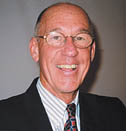
While in New Zealand I was able to visit and talk with two of New Zealand's largest wholesalers.
Crane Distribution NZ Ltd. is an Australian-based distributor and probably the largest in Australia and New Zealand. They do business as Mico Plumbing and Pipelines, and Master Trade. Yes, two companies - basically the same products, but Mico markets to the plumbing trade and Master Trade markets to the consumer. They did about $500 million NZ$ (about $350 million U.S.) in 2003. They are publicly owned. Mico has 36 branches and 29 showrooms. Master Trade has 44 outlets and 41 showrooms. In Christchurch we toured the showrooms and interviewed Christine Rivers, marketing manager for both companies. The combined companies have 1250 employees - so they're big.
Revenue for showroom products (what they refer to as “front of the wall” products) were $150 million NZ$ ($105 million U.S.) in 2003. Gross profit margin on showroom sales has declined sharply in the past five years - from 28% in 1997 to 23% in 2003 - a terrible trend that they acknowledge has to be reversed. Just like in the United States, and I'm sure most free entrepreneurial societies, everyone points the finger at the other guy for the cause of eroding profitability.
I am going to focus on Mico because they are more like our wholesale distributors. And like the United States and Canada, New Zealand wholesalers are going through an evolution with their showroom businesses. The plumbing contractor has been “king.” Mico works very hard at developing relationships/partnerships with the plumber. They also spend a lot of money via incentives, trips, gifts, etc., trying to cement these relationships. But as far as showrooms go, they recognize that the consumer and builder have become the main decision-makers. Seven years ago all showroom sales went through the plumber. Today it's 30% plumber, 20% consumer and 50% builder, architect and interior designers. However, the consumer is growing more important every day.
Their main competitors are other wholesalers, “big boxes” and independents, just like here!
The average size of the showrooms varied by size of marketplace, but averaged 900 to 1500 sq. ft. The hours of operation are 8:30 a.m. to 5 p.m. Monday to Friday, and 9 a.m. to 3 p.m. on Saturdays. And like here, Saturdays are their busiest day.
The services offered were similar to ours. They accept credit cards, deliver to the job site, do limited “tag and hold,” try to work by appointment and get quotes out in as close to 48 hours as possible.
Every item on display has the name of the product (including the manufacturer of the item) and a price. So, no model number, but giving the name does the same thing. The price shown is their retail list (list less 20% +/-). Sales consultants can change pricing and trades customers do get better pricing.
Sales training of showroom consultants is mostly “on the job” and manufacturer product training. In their first month they take them to their home office in Auckland to educate them on the company and how to sell in the Mico manner. They also try to have them get to as many manufacturer's showrooms as possible. However, they don't do ongoing sales training, which is critical.
The products on display are mostly traditional wholesale manufacturer products. Even those that aren't are shown in several other showrooms in the same market area. Manufacturers seem to have decided on no semi-exclusivity. With customers compiling a list of products to buy and putting it out to bid to several people, margins have been allowed to shrink. The showrooms give out literature, which also makes it easy to shop a quote.
Mico prints a catalog showing all the “front of the wall” products they sell. It is beautifully done, more than 200 pages, full color, shows the names of the products and has a sell price for each item. It's an expensive marketing tool, and it locks them into a price structure for a full year. The other main distributor, Plumbing World, does a periodic 30+ page, full color brochure and does mass mailings to consumers, tradespeople, etc. Both distributors feature the same products. No wonder margins are low and shrinking. Until they diversify products and stop going head-to-head in the marketplace, they will be the losers, while the manufacturers and end buyers will be the winners.
New Zealand does not charge any import tax on items coming into their country. Consequently the market gets flooded with products that companies (especially European) want to “test market.” The manufacturer may bring in dozens of newly designed faucets to see what the consumer thinks of them. If they don't sell, it leaves the showroom and the consumer with a product that can't be serviced or ever repaired because there are no parts available. High-end showrooms must sell only products that can be serviced - and use that as a selling feature to the customer.
New Zealand's plumbing wholesalers don't show and sell kitchen sinks. Manufacturers sell direct to kitchen cabinet sales outlets. Stainless steel has to be 90%+ of what is sold. Surprisingly, we didn't see any island or bar sinks.
There was a combination of New Zealand and Australian-made products - but quite a few European products as well (many the same ones being sold in the United States). TOTO has a presence and Kohler is represented. Kohler entered the market by buying one of the largest manufacturers of acrylic tub and shower units.
New Zealand wholesalers appear to be where the United States and Canada were five to eight years ago, battling low margins, little diversification, no profit centers, and limited sales training. So congratulations to all you folks that have changed or are changing. You're having more fun and making more money!

